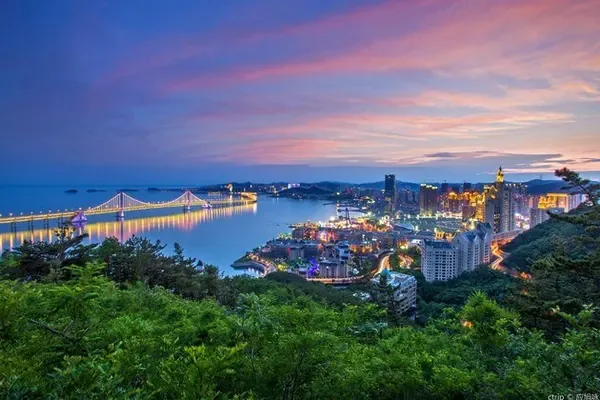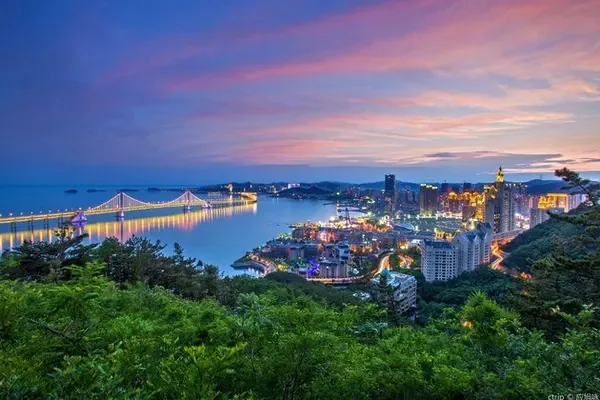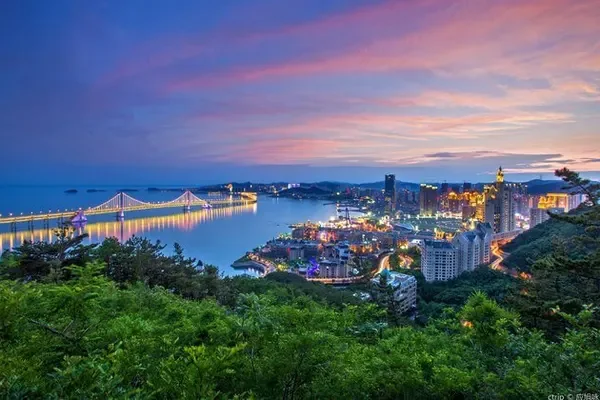It has produced many classic films such as "The Wrangler", "Journey to the West", "Red Sorghum", "The Swordsman in Guanzhong" and many other classic films. It is known as "China's unique" western movie theater. It is located in Xijiao Town, Yinchuan, Ningxia Hui Autonomous Region Beibao is 38 kilometers away from Yinchuan City.

On the afternoon of October 2, 2007, the reporter went to this famous western film and television city in Ningxia Hui Autonomous Region after paying homage to the rock paintings of Helan Mountain with the Beijing Aiche Sunshine National Day Self-driving Tour Team.

The convoy set off from Helan Mountain and arrived at the Western Film and Television City after about half an hour's drive. I saw a lot of tourists here, and the parking lot was full of various vehicles. This is the scenic spot where the convoy has encountered the most tourists since its trip.

This time, the sightseeing route chosen by the self-driving team, along the way, the tourists who visited several scenic spots such as the Tombs of the Western Xia Dynasty, Shahu, Helan Mountain, etc., are not too many compared to the festival, but here, they are Obviously feel the warm atmosphere of the National Day Golden Week tourist attractions.

Beibao, Yinchuan Town, Ningxia, where the Western Film and Television City is located, has gone through hundreds of years of vicissitudes. With its vigorous and simple style, it has become a famous scenic spot in the eastern foot of Helan Mountain. At the same time, its unique mysterious charm has also attracted many people in China. Because of the strong interest of famous film artists, it was praised as a "mysterious treasure land" by artists.

Western Yinchuan Film and Television City is called Zhenbeibao Western Film and Television City. It was originally a garrison fortress set up in the Ming and Qing Dynasties to defend against the invasion of Fucheng (Yinchuan City) by various ethnic groups north of Helan Mountain. Zhenbei Fort also got its name. The local people call them "Old Castle" and "New Castle" respectively. According to local chronicles, the old castle was built in the thirteenth year of Hongzhi in the Ming Dynasty (1500), and the new castle was built in the fifth year of Qianlong in the Qing Dynasty (1740).

In 1961, the famous writer Zhang Xianliang was released through labor reform. In the spring of the following year, he found two dilapidated old castles that had been destroyed by time and man-made destruction in an accidental gathering in the spring of the following year. It is called "Zhennan Fort".

Since then, the two ancient castles have formed an indissoluble bond with Chinese film and television... Now, these two abandoned frontier castles have become well-known film and television cities at home and abroad, enjoying the reputation of "Chinese films go to the world from here". reputation.

The two ancient castles, one south and one north, where Zhenbeibao Film and Television City is located, face east from west. The old castle adjacent to the east side of the Yanshan Highway has been completely eroded by wind, and only the ruined walls and ruins remain. The city is 175 meters long from east to west and 160 meters wide from north to south. Going north through the loess road in the city is the ruins of the old castle. Here is now the "Ming City" built first by the film and television city.

Another 200 meters to the north is Newcastle. The Xinbao Castle is relatively complete, 170 meters long from east to west and 150 meters wide from north to south. The wall is made of rammed loess and is more than 10 meters high.

There is a semicircular urn city in the east, and there is a slope on the south side of the city gate to climb the city wall. The city wall is 5 meters wide and has 1.8-meter-high battlement crenels built on the wall. There were originally turrets at the four corners of the city wall, and the foundations of the turrets can be vaguely seen. Xinbao is the "Qingcheng" built after the film and television city.

Since the 1980s, since the film "Wrangler" starring Cong Shan and Zhu Shimao directed by Shanghai Film Studio's famous director Xie Jin was successfully filmed in Zhenbeibao and won the "Hundred Flowers Award", Zhang Yimou, a film and television genius, is here again. He directed the film "Red Sorghum", which was on the podium of the "Berlin Golden Bear Award" for the first time. Since then, the charm of Zhenbeibao Western Film City has also become famous all over the world.

Today, Zhenbeibao Western Studios has filmed more than 80 film and television works so far, and Gong Li and Jiang Wen are also lucky to rise from the ruins of this ancient castle and become famous movie stars. The film "Yellow River Ballad" directed by Teng Wenji won the international award - "Montreal Gold Award" for its mysterious charm of the castle.

Since then, Zhang Xianliang, a famous Chinese writer, founded the West China Film and Television City in the ancient castle. There have been "Five Queens" and "Five Women and a Rope" co-produced by Xiying and Taiwan; "Youth" and "Evil in the West"; directed by Xie Jin, 40 films including "The Old Man and the Dog", "Goddess of the Wilderness" and "The Conqueror" directed by Xie Jin and starring Xie Tian and Siqin Gaowa were successfully shot here, causing a sensation in China Foreign film circles.

Famous director Huang Jianxin, well-known actors Wang Yumei, Wang Fuli, Zhou Lijing and Taiwan Golden Horse Award winner Zhang Shi and many other film and television actors have all displayed their artistic talents in Zhenbeibao, where China's unique "Western Film and Television City" is located.

The "Blacksmith Camp", "Wine Workshop", "Red Sorghum Jiuer's Room", "Moon Gate", "Sanbu Bathing Hall", "Competition Platform", "Dragon Inn", "Tallinn", etc. are preserved in the film and television city. More than 40 famous places, such as "Journey to the West. Bull Demon King's Palace", "Tofu House", "Captain's Mansion", "Mysterious Cave", "Avalokitesvara Temple", "Embroidery Building", "Restaurant", "Multiple Film and Television Street", etc. The main scene and more than 100 subsidiary scenes of the film and television are distributed in the two forts of the Ming and Qing Dynasties for tourists to visit all the year round.

In addition, there is a scene of "Country during the Cultural Revolution", equipped with an old-fashioned film projector to show newsreels during the "Cultural Revolution", making tourists feel like entering the "time tunnel" to return to the scene of the past. "Movie Poster Exhibition", "Picture Props Exhibition Hall" and "Ancient Furniture Exhibition Hall" not only provide the best performance environment for actors, but also collect precious antique furniture for tourists to appreciate, allowing them to appreciate the essence of traditional Chinese home culture. Sophistication and beauty.

In the "Country during the Cultural Revolution" scene area, the reporter saw some fellow tourists here imitating the scene of criticism during the "Cultural Revolution". Still laughing happily on stage. Time has really changed. The serious class struggle of the past has now been transformed into a game for people to entertain. It seems that the leap of the modern era has already thrown away some of the dust of history.

In particular, China's first "dynamic picture exhibition hall" - "Hundred Flower Hall" is even more amazing for tourists. Its appearance is a Tibetan-style bunker, but the interior is a TV wall composed of 100 TV sets. Each TV set on the wall plays the pictures of different films shot here, which makes people dizzying, dazzled and full of joy. Demonstrated the visual impact of film and television art. At the same time, "Hundred Flower Hall" is also a memorial hall for Chinese film and television artists.

The newly added scenic spot "Relics Gallery" in "Mingcheng" adopts the most advanced "reversible" protection measures in the world. It not only covers the entire site so that it will no longer suffer from man-made damage and weathering, but also walks in it. , but also allows people to see the original appearance of the ruins through the glass corridor under their feet. It can be described as ingenuity.

Today's Zhenbeibao Western Film City has become the best experiential amusement park in China. Not only for tourists to visit, but also to provide tourists with scenes, costumes and props, to shoot travel documentaries, MTV, imitation shows, self-written and self-acted short films, etc. The film and television works performed are made into video discs as people's permanent collections to commemorate.

At the same time, Zhenbeibao Western Studios also opened costume photography, studio camel bells, stuffed horses, ox carts and donkeys, pottery making, lucky archery, millennium sedan chairs, opera singing, embroidered building recruiting relatives, auspicious maze , Royal Shooting Range and other highly participatory entertainment projects.

Many car enthusiasts are eager to try here, some are galloping horses, some are performing at the shooting range, some are putting on make-up and taking photos, and some are happily playing "fighting" with each other with props, knives and guns. Everyone enjoyed themselves and spent the National Day in Western Studios A very enjoyable afternoon at the festival.

The tour guide said that the future Zhenbeibao West Studios will become a projection of a small town in ancient northern China. The newly built "Exhibition Hall" will reproduce the way of life, production and play of our ancestors. Letting tourists and friends come here is like passing through a "time tunnel", returning to the past that people have disappeared, so as to arouse the memory of our nation and expand people's infinite imagination... (Photo: Feng Ganyong)


